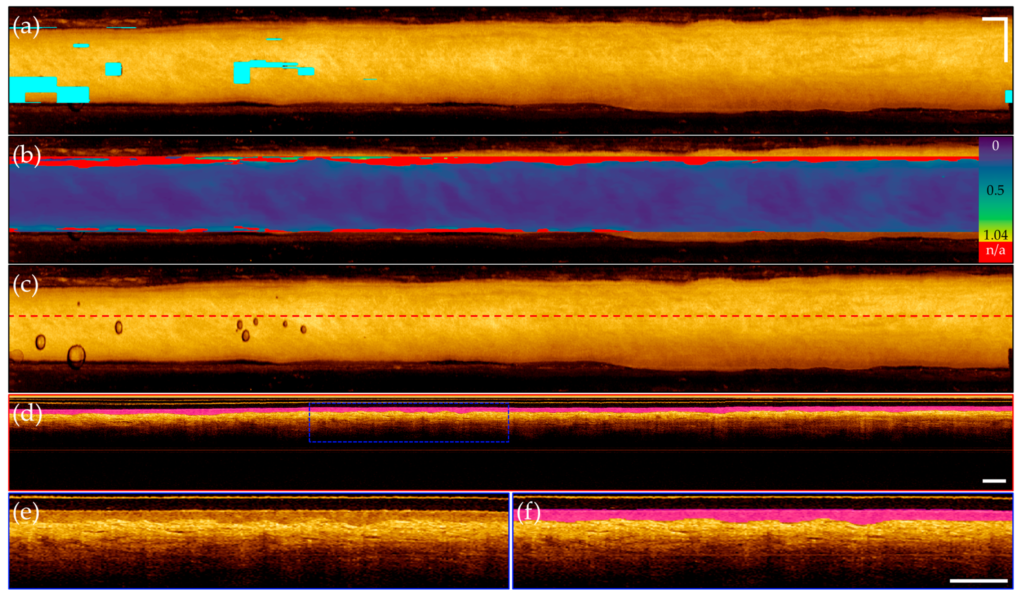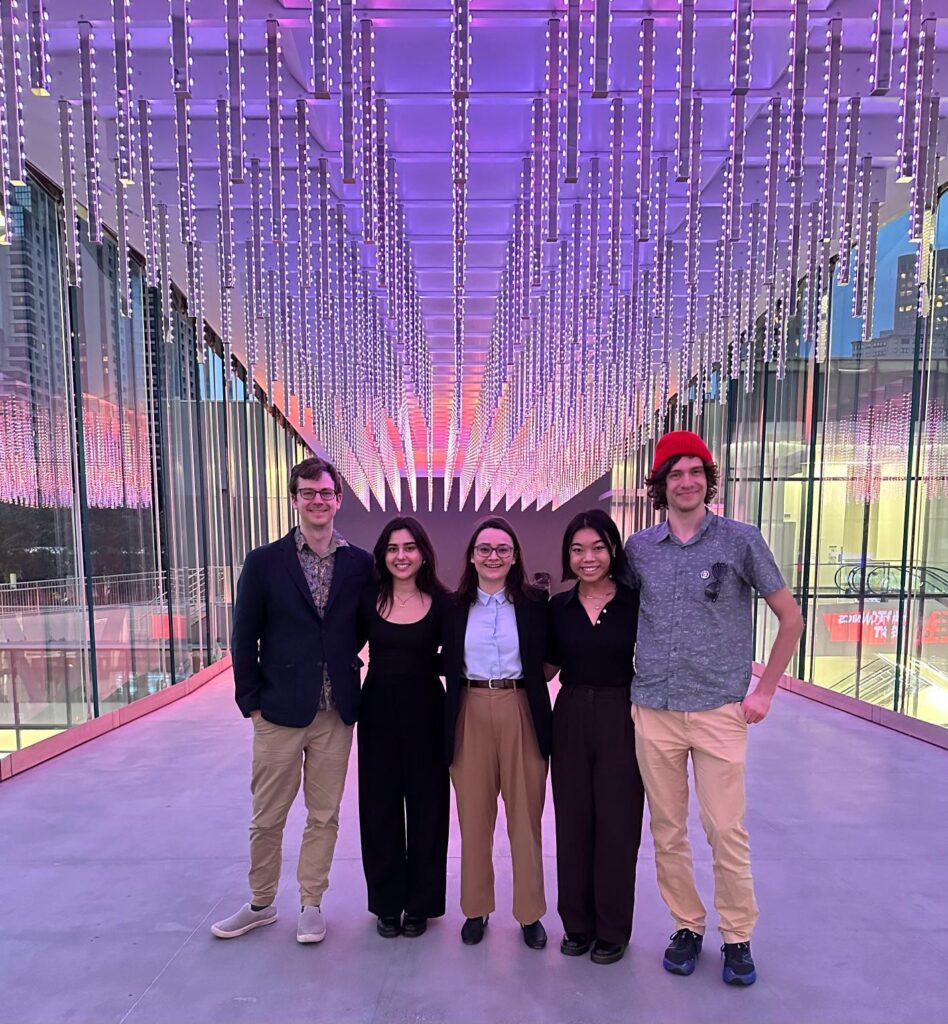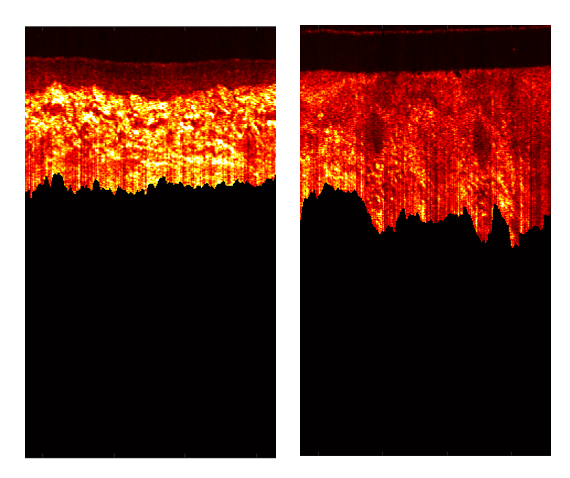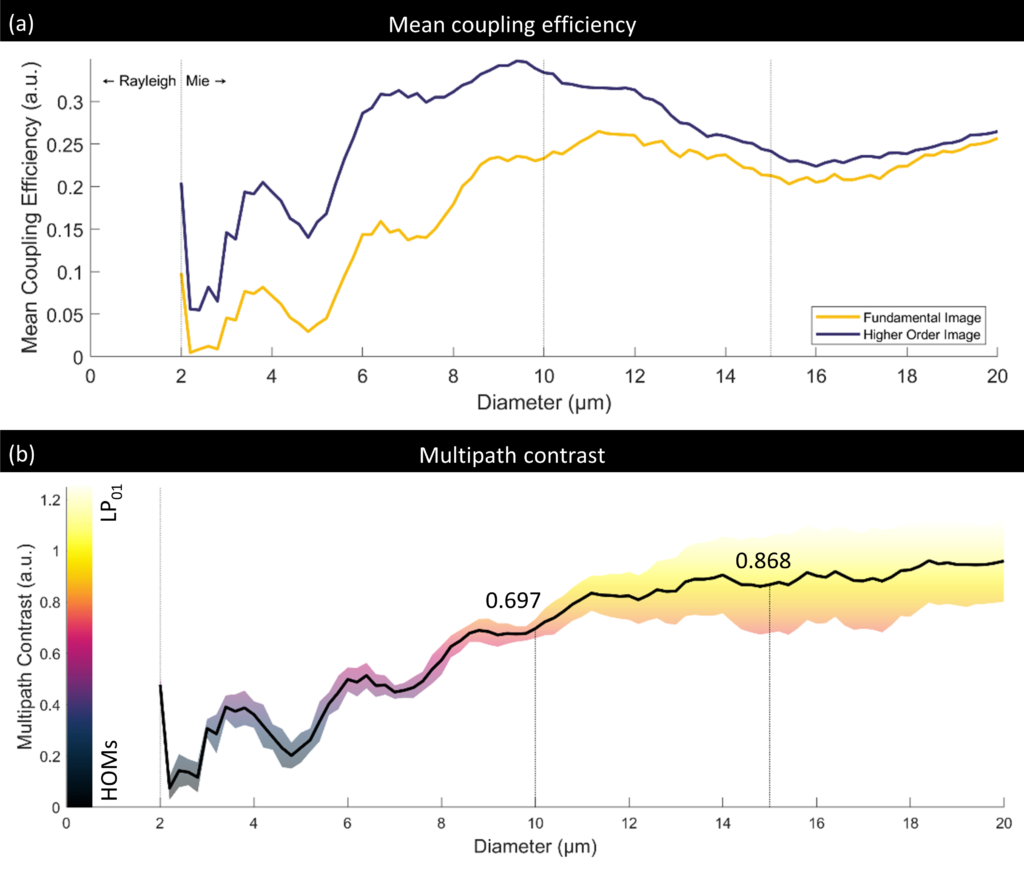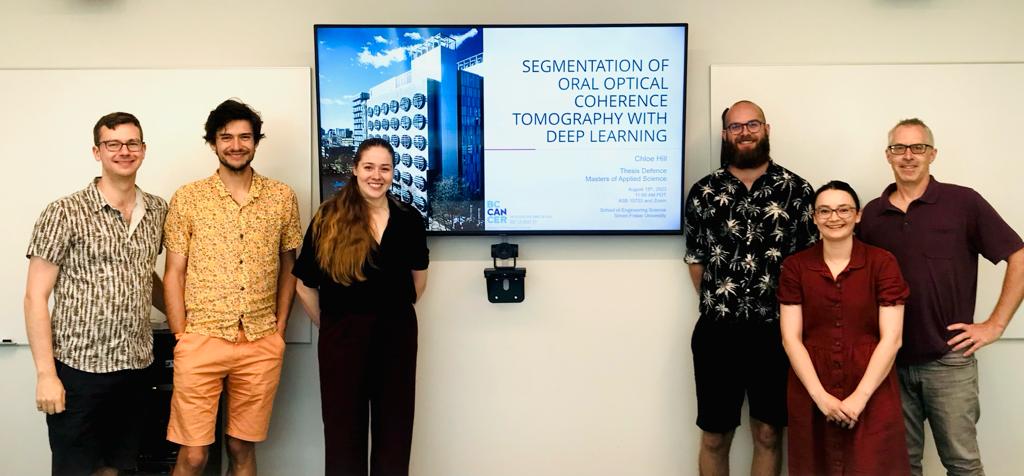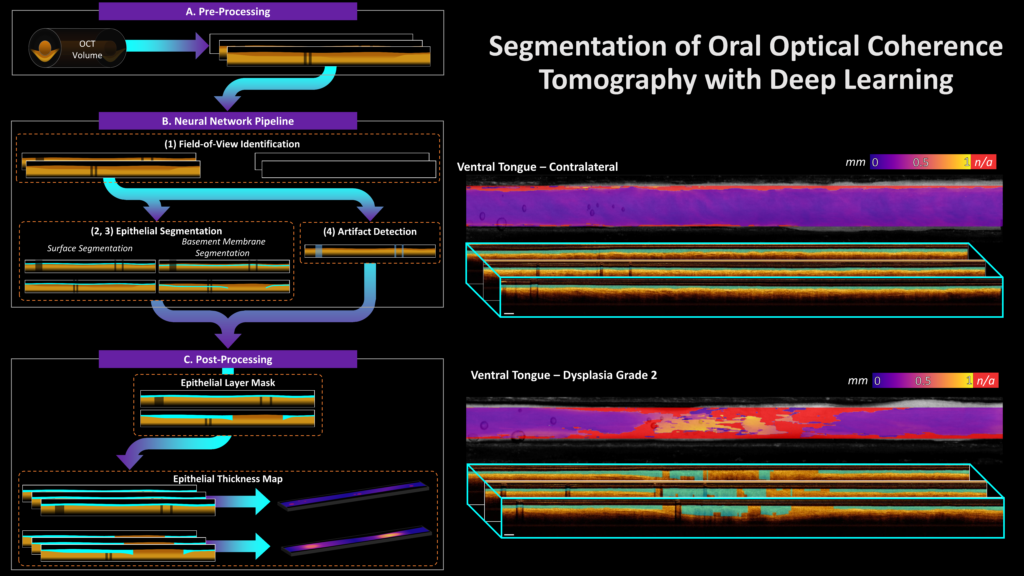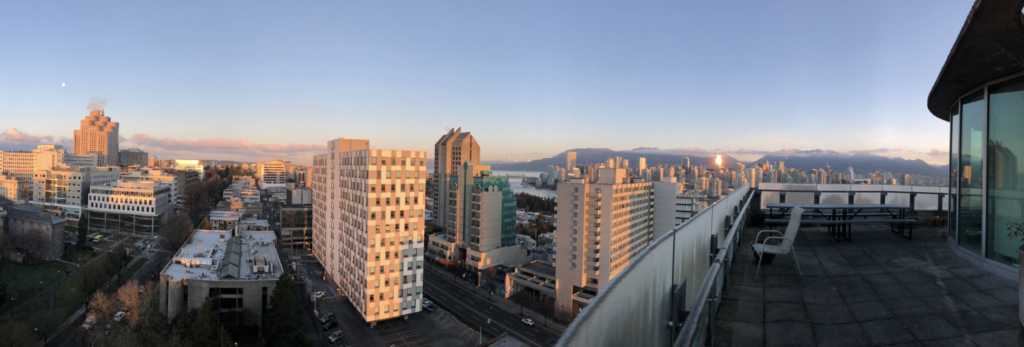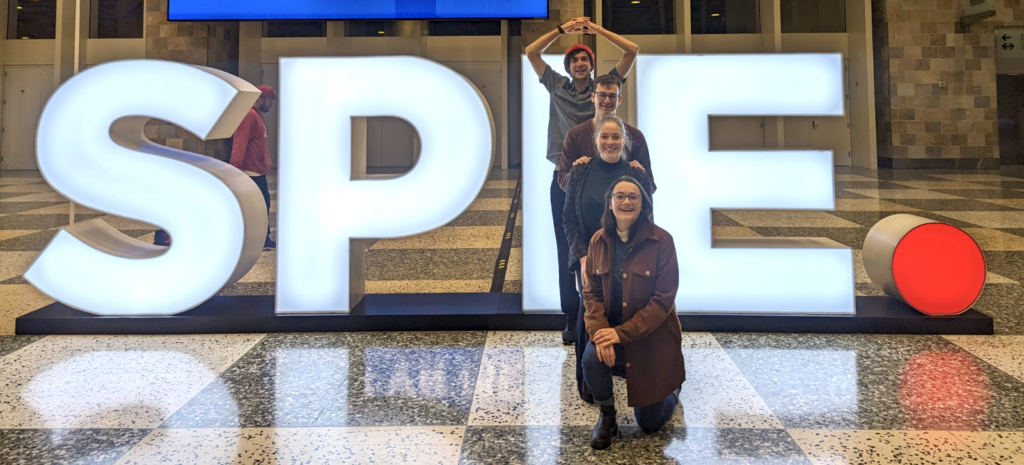Congratulations to Chloe, a recent Masters student in our lab for her first publication in MDPI Cancers.
OCT produces a large amount of 3-dimensional data which is hard to quantify manually. This study presents a neural network pipeline to simplify OCT interpretation by providing information about epithelial depth and stratification through simple en face maps. The pipeline’s predictions demonstrate as-good-as or better agreement than inter-rater agreement, suggesting strong predictive power.


